Footwear is an essential part of our daily lives, and it’s crucial to choose the right type of shoes to support our feet and prevent injuries. Heel cups and cushioned insoles are two popular additions to shoes that can provide extra support and comfort, especially beneficial for those seeking relief from heel pain and foot discomfort.
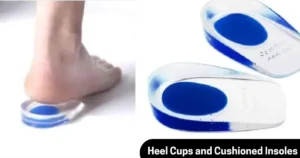
In this article, we’ll explore the benefits of heel cups and cushioned insoles, the different types available, and how to choose the right one for your needs. We’ll also discuss the benefits of combining the two products and common mistakes to avoid when using them for heel pain relief.
Choosing the Right Heel Cups and Cushioned Insoles for Your Foot Type
1. Heel Cups:
Heel cups are padded inserts that are designed to fit into the heel area of a shoe. They provide extra cushioning and support to the heel, helping to reduce pressure and discomfort. Heel cups can be particularly useful for individuals with flat feet or those who spend long periods standing or walking.
I. Benefits of heel cups:
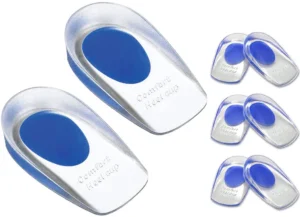
- Reduces pressure on the heel: Heel cups provide extra cushioning, which can help to reduce the pressure on the heel and prevent discomfort.
- Improves stability: Heel cups can help to improve stability, especially for individuals with flat feet or those who have a tendency to roll their feet inwards.
- Reduces the risk of injury: By providing extra support and cushioning, heel cups can help to reduce the risk of injuries such as plantar fasciitis and Achilles tendonitis.
II. Types of heel cups:
- Standard heel cups: These are the most common type of heel cup and are designed to fit into most shoes.
- Custom heel cups: These products are specially designed to fit a specific shoe and can provide a more precise fit, offering relief from heel pain.
- Gel heel cups: These are made from a gel-like material that provides extra cushioning and support.
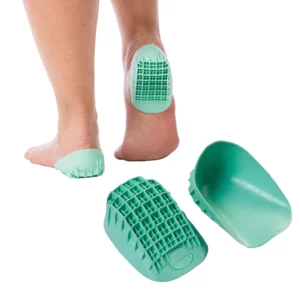
III. How to choose the right heel cup:
- Consider the type of shoe: Heel cups are available for different types of shoes, so it’s essential to choose one that is compatible with the shoe you’re wearing.
- Consider your foot type: If you have flat feet or a tendency to roll your feet inwards, a heel cup with extra support may be more suitable.
- Consider your activity level: If you spend long periods standing or walking, a heel cup with extra cushioning may be more beneficial for heel spur relief.
IV. Common mistakes when using heel cups:
- Wearing the wrong size: Heel cups should fit snugly into the heel area of the shoe, but they should not be too tight.
- Not wearing them correctly: Heel cups should be worn with the heel cup’s logo facing downwards.
- Wearing them with the wrong type of shoe: Heel cups, which offer heel pain relief, are not suitable for all types of shoes, so it’s essential to choose one that is compatible with the shoe you’re wearing.
2. Cushioned Insoles:
Cushioned insoles are padded inserts that are designed to fit into the sole of a shoe. They provide extra cushioning and support to the foot, helping to reduce pressure and discomfort, hence acting as a pain relief for those suffering from foot pain. Cushioned insoles can be particularly useful for individuals with high arches or those who spend long periods standing or walking.
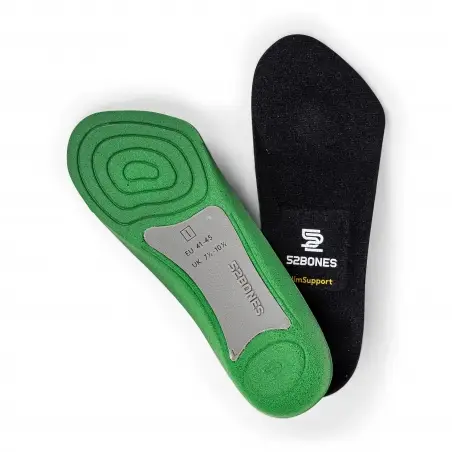
I. Benefits of cushioned insoles:
- Reduces pressure on the foot: Cushioned insoles provide extra cushioning, which can help to reduce the pressure on the foot and prevent discomfort.
- Improves comfort: Cushioned insoles can help to improve comfort, especially for individuals with high arches or those who spend long periods standing or walking.
- Reduces the risk of injury: By providing extra support and cushioning, cushioned insoles can help to reduce the risk of injuries such as plantar fasciitis and Achilles tendonitis.
II. Types of cushioned insoles:
- Standard cushioned insoles: These are the most common type of cushioned insole and are designed to fit into most shoes.
- Custom cushioned insoles: These are specially designed to fit a specific shoe and can provide a more precise fit.
- Gel cushioned insoles: These are made from a gel-like material that provides extra cushioning and support.
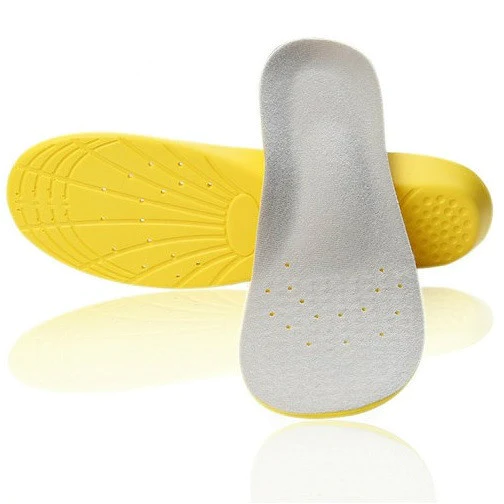
III. How to choose the right cushioned insole:
- Consider the type of shoe: Cushioned insoles are available for different types of shoes, so it’s essential to choose one that is compatible with the shoe you’re wearing.
- Consider your foot type: If you have high arches or a tendency to roll your feet outwards, a cushioned insole with extra support and arch support may be more suitable to alleviate foot pain.
- Consider your activity level: If you spend long periods standing or walking, a cushioned insole with extra cushioning may be more beneficial.
IV. Common mistakes when using cushioned insoles:
- Wearing the wrong size: Cushioned insoles should fit snugly into the sole of the shoe, but they should not be too tight.
- Not wearing them correctly: Cushioned insoles should be worn with the cushioned insole’s logo facing upwards.
- Wearing them with the wrong type of shoe: Cushioned insoles are not suitable for all types of shoes, so it’s essential to choose one that is compatible with the shoe you’re wearing.
3. Combining Heel Cups and Cushioned Insoles:
Combining heel cups and cushioned insoles can provide even more support and comfort to the foot. By using both, you can reduce pressure on the heel and the foot, providing extra cushioning and support. This can help to improve stability, reduce the risk of injury, and improve overall comfort.Benefits of combining heel cups and cushioned insoles:
- Reduces pressure on the heel and foot: By using both heel cups and cushioned insoles, you can reduce pressure on both the heel and the foot, providing extra cushioning and support.
- Improves stability: Combining heel cups and cushioned insoles can help to improve stability, especially for individuals with flat feet or those who have a tendency to roll their feet inwards or outwards.
- Reduces the risk of injury: By providing extra support and cushioning, combining heel cups and cushioned insoles can help to reduce the risk of injuries such as plantar fasciitis and Achilles tendonitis.
I. How to combine heel cups and cushioned insoles:
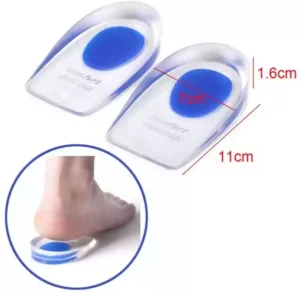
- Choose the right type of heel cup and cushioned insole: When choosing heel cups and cushioned insoles, consider your foot type, activity level, and the type of shoe you’re wearing.
- Insert the heel cup first: Place the heel cup into the heel area of the shoe, making sure it fits snugly and is not too tight.
- Insert the cushioned insole: Place the cushioned insole into the sole of the shoe, making sure it fits snugly and is not too tight.
- Ensure the heel cup and cushioned insole are positioned correctly: Heel cups should be worn with the heel cup’s logo facing downwards, and cushioned insoles should be worn with the cushioned insole’s logo facing upwards.
II. Common mistakes when combining heel cups and cushioned insoles:
- Wearing the wrong size: Heel cups and cushioned insoles should fit snugly into the shoe, but they should not be too tight.
- Not wearing them correctly: Heel cups should be worn with the heel cup’s logo facing downwards, and cushioned insoles should be worn with the cushioned insole’s logo facing upwards.
- Wearing them with the wrong type of shoe: Heel cups and cushioned insoles are not suitable for all types of shoes, so it’s essential to choose one that is compatible with the shoe you’re wearing.
III. Choosing the Right Heel Cups or Cushioned Insoles
When selecting heel cups or cushioned insoles, it is essential to consider factors such as your foot shape, the level of support needed, and the activities you will be engaging in. Proper fitting and usage are crucial for maximizing the benefits of these products and preventing discomfort or injury.
4. Importance of Heel Cups and Cushioned Insoles
Heel cups and cushioned insoles are not just accessories; they are essential tools in promoting foot health and comfort. These inserts can provide much-needed support, alleviate pain, improve stability, and even prevent injuries. By choosing the right heel cups and insoles, you can transform your footwear into a comfortable haven for your feet.
5. Maintenance and Care Tips
To ensure the longevity and effectiveness of your heel cups and cushioned insoles, proper maintenance is essential. Regular cleaning and care routines can prolong the life of your inserts and keep them fresh and hygienic. Knowing when to replace worn-out inserts is also crucial for maintaining optimal support and comfort.
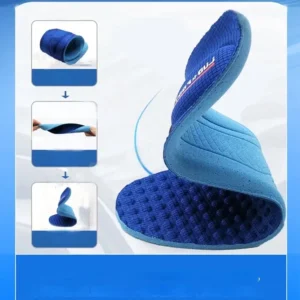
I. Air Them Out:
After each use, remove the insoles from your shoes to allow them to dry and release any moisture they have absorbed during the day. This helps prevent odor and maintains their freshness.
II. Regular Cleaning:
Clean your insoles regularly to prevent the buildup of dirt, oils, and bacteria. Use gentle soap and water to scrub them, ensuring not to oversaturate the insoles, especially if they are made of leather or foam.
III. Proper Storage:
When not in use, store your insoles in a cool, dry place to maintain their shape and prevent moisture buildup. Avoid exposing them to direct sunlight or heat sources.
IV. Rotate Usage:
If you wear your insoles frequently, consider alternating between pairs to allow them to air out and reduce wear and tear. This can prolong their lifespan and effectiveness.
V. Timely Replacement:
Keep an eye out for signs that indicate it’s time to replace your insoles, such as flattened arch support, visible wear, persistent odor, or color changes. Typically, replace insoles every 6-12 months depending on use.
VI. Special Care for Different Materials:
Tailor your cleaning methods based on the material of your insoles. For example, gel insoles or cloth insoles can be washed with soap and water, while leather insoles require a delicate touch with a damp cloth and mild soap.
VII. Deodorizing Techniques:
Use natural deodorizers like baking soda to absorb odors and keep your insoles fresh. Sprinkle baking soda generously over the insoles, leave it for several hours or overnight, then brush off completely before air-drying.
VIII. Preventive Measures for Foot Health:
Proper foot hygiene is essential, especially if you have conditions like diabetes. Check with your doctor for specific foot care routines if needed to avoid complications like ulcers, infections, calluses, and neuropathy.
By following these maintenance and care tips, you can ensure that your heel cups and cushioned insoles remain effective, comfortable, and hygienic for an extended period.
Conclusion
In conclusion, heel cups and cushioned insoles offer a transformative solution for foot discomfort, providing support, comfort, and relief. By understanding the benefits, differences, and maintenance tips outlined in this guide, you can make informed choices to enhance your foot health and overall well-being. Embrace the joy of pain-free walking with the right support for your feet!
Frequently Asked Questions
Q1. Do heel cups really work?
Heel cups are designed to provide additional support and cushioning to the heel, offering relief from foot pain and discomfort. While they can be effective for some individuals, their efficacy may vary depending on the underlying foot condition. Research suggests that heel cups can help with shock absorption and provide comfort, especially for conditions like plantar fasciitis.
Q2. When should heel cups be used?
Heel cups are commonly used to alleviate intense pain associated with plantar fasciitis, provide cushioning for the heel, reduce pressure on inflamed tissue, support the Achilles tendon, and mitigate discomfort from conditions like heel spurs. They are beneficial for athletes during high-impact activities, individuals with leg length discrepancies, and those seeking comfort and pain relief for various foot conditions.
Q3. What is the best insole for heel pain?
For heel pain relief, full-length insoles are often recommended as they provide comprehensive support with properly aligned heel cushioning, arch support, shock absorption, and overall foot alignment. Insoles like Tuli’s Plantar Fasciitis Insoles are highly regarded for their effectiveness in providing relief from plantar fasciitis and other heel-related issues.
Q4. What is the heel cushion used for?
Heel cushions, like heel cups, are used to provide cushioning and support to the heel, reducing pressure points, absorbing shock, and enhancing comfort. They are beneficial for individuals seeking relief from heel pain, plantar fasciitis, Achilles tendonitis, heel spurs, and leg length discrepancies. Heel cushions are known for their comfort, pain relief, and performance-enhancing qualities.
Q5. Do heel cups go under socks?
Heel cups are typically placed inside the shoe, directly under the heel, to provide support and cushioning. While some individuals may choose to wear them under socks for added comfort, heel cups are designed to be worn inside the shoe to ensure proper alignment and effectiveness in providing relief from foot pain.
Q6. What can I use instead of insoles?
Instead of traditional insoles, individuals can opt for custom orthotics, arch supports, heel cups, or heel cushions to address foot-related issues and enhance comfort. Custom orthotics offer personalized support, while heel cups and cushions provide targeted relief for heel pain and plantar fasciitis.
Q7. How do you cushion heel pain?
To cushion heel pain effectively, using heel cups, cushions, or insoles with proper cushioning and shock absorption properties is essential. These inserts help reduce pressure on the heel, absorb shock during activities, and provide comfort for conditions like plantar fasciitis and Achilles tendonitis.
Q8. Do silicone heel cups work?
Silicone heel cups are known for their effectiveness in providing cushioning, shock absorption, and support for the heel. They can help alleviate heel pain, reduce pressure points, and enhance comfort, especially for individuals with conditions like plantar fasciitis. Silicone heel cups are a popular choice for foot support and pain relief.
Q9. Do insoles fix plantar fasciitis?
Insoles, particularly full-length ones, can be effective in providing relief from plantar fasciitis by offering proper heel cushioning, arch support, shock absorption, and foot alignment. While insoles can help manage plantar fasciitis symptoms, it’s essential to consult with a healthcare professional for a comprehensive treatment plan tailored to individual needs.



